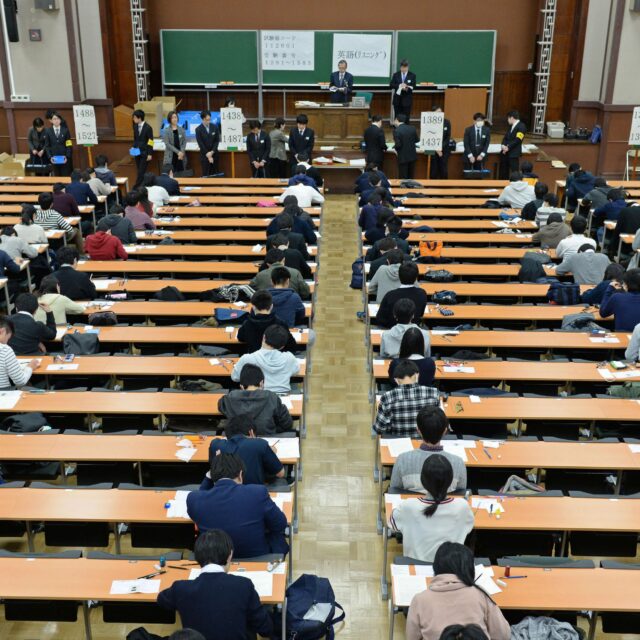By Hu Wo (Cuckoo’s Song)
Only when good discipline is obtained can the purpose of education be fully served, so far as education is concerned. It is also believed that the national discipline often hails from schools as well as discipline is human value. In fact, the term `discipline´ means correcting and directing students towards acceptable behaviour for the purpose of helping the individual to acquire knowledge, habits, interests, and ideals which conduce to the well-being of himself, his fellows, and society as a whole. Self-discipline refers to assuming social and moral responsibility for one’s own actions and doing so of one’s own volition, not solely out of fear of punishment or external rewards. But when practising self-discipline, students must agree to live with the limits created not only by themselves but also by others. As to discipline, what teachers and parents do is guide children’s self-control, encourage them to be independent, meet their intellectual and emotional needs, establish expectations for them, organize appropriate behaviours, arrange an environment for self-discipline, and when necessary, change their own behaviour.
The general aims of discipline are to help build the habit of abiding by the school rules designed for students’ all-round development, to create and preserve the conditions essential to orderly school progress, to prepare students for effective participation in life, and to instil the fundamentals of self-discipline. By the principles of discipline, discipline can be maintained through positive measures, if it is to be creative and constructive. On the credit side, a punishment that may stop something but can never help create anything should be supplemented by more positive measures only. True discipline must be based on and controlled by love not by fear. Teachers ought to try to secure the cooperation of students in the matter of discipline as well. Students like to seek security and therefore preserve this feeling both in the classroom and outside. In discipline, sanctions should be used as far as possible from those in force in adult society. After all, students have to be accustomed to the authority of society and its laws. According to Piaget’s Disciplinary Stages, children do not understand rules before three years of age. Between the ages of three and eight, they think that rules come from some high authority, which cannot be changed. Children in the 8-12 age bracket get to understand the social nature of rules that can be changed. Only after 12 do they completely understand the rules. There are found seven theories regarding discipline: the limit-setting approach, applied behaviour analysis, cognitive behaviourism, Neo-Adlerian theory, humanism, choice theory, and system theory.
In the limit-setting approach, children need clear limits. Their learning calls for order. The goal of discipline in this approach is order and obedience. In terms of the approach, the reasons for students’ disruptive behaviour are supposed to be a lack of parental guidance and non-assertive teachers. Limit-setting teachers have the right and responsibility to be in charge. They can establish order, too. The strengths of the limit-setting approach say practical recommendations while its weaknesses tell being authoritarian, having some recorded negative effects on students, and not getting based on pedagogical theory. In choice theory, children are capable of self-discipline. They learn when curricula meet their emotional needs and teaching is of high quality. This theory aims at order, autonomous ethics, emotional regulation, cooperation, and integrity. In accordance with the theory, the reasons why students are on disruptive behaviour show low-quality education, and student needs not being met at school. Unlike the limit-setting approach, both students and teachers have equal rights to have their needs met but occupy different roles in choice theory. The teachers are even able to promote the personal growth of students. This theory has the strengths of promoting self-responsibility, taking context to remove heat from student-teacher conflicts, wide applicability, adding counseling intervention to a humanist base, living democracy, and an effective whole-school approach, whereas it is of the weaknesses that require teachers to have sophisticated and students need competent verbal skills.
It should be remembered that many common discipline problems might give rise to misbehaviour amongst students. They are 1) lack of parental involvement, 2) overcrowded classrooms, 3) lack of discipline management strategies among educators, 4) poor relationship between educators and learners, 5) educators as poor role models, 6) unjustified school rules, 7) an authoritarian leadership style, 8) insufficient presentation of lessons, 9) lack of motivation of lessons, 10) peer pressure, 11) lack of acceptable outlets to express feelings, and 12) lack of responsibility and accountability as regards discipline rules on the part of headmasters.
Three key dimensions of discipline have been identified for classroom management by Richard L. Curwin and others – prevention, action, and resolution — where prevention expresses what the teacher can do to actively prevent discipline problems and to deal with the stress associated with classroom disruptions; action demonstrates what actions the teacher can take when, despite all the steps taken to prevent discipline problems, they are still occurring; and resolution explains what the teacher can conduct to resolve issues with the chronic rule breaker and the more extreme out-of-control students or at least to diminish the intense negative impact such these students have on the teaching-learning process. In order to prevent discipline problems, the teacher needs to know and express himself clearly, know his students, make his classroom a motivating place, teach responsibility and caring, establish effective rules and consequences, keep himself current, or deal with stressful conflict. When discipline problems crop up, the teacher has to stop the misbehaviour quickly, get back to teaching, keep students in class, implement consequences, or collect data. Resetting contract negotiation with individual students demands finding what is needed to prevent another problem, developing a mutually agreeable plan, implementing the plan, monitoring the plan or revising it if necessary, and using creative or unconventional approaches when necessary.
Educators must have taken into account typical teacher-student disciplinary roles in various plans. With regard to school discipline, if only teachers are in charge, the class is teacher-directed. The teachers are hands-on. Students are not offered choices. Teachers provide consequences. They use intervention and isolation. The classroom climate can be intense besides having limits without freedom. If both teachers and students take charge of school discipline, they work cooperatively and join hands. The students are given structural choices. The teachers ask questions and discuss and solve problems with them. They intervene, and agreements are reached. Together teachers and students set limits by establishing a code of conduct. The classroom too has freedom within limits. At last, if only students are concerned about school discipline, the class is student-centred. Teachers are hands-off. Students have too many choices and teachers utilize nondirective statements. The students are responsible for conduct, although the teachers listen to it. Students are taught responsibility as well as the classroom climate can be chaotic. In contrast to the roles of teachers in charge, the classroom has freedom without limits.
Students are responsible for attending school regularly, showing a conscientious effort in classroom work, and conforming to school rules and regulations, including the fact that no student has the right to interfere with the education of fellow students. To fulfill student responsibility for good discipline, the student should respect and protect teachers, students, administrators, and everyone else involved in the educational process, practice academic honesty, express ideas and opinions in such a respectful manner that does not offend or slander others, be aware of all rules and regulations for student behaviour and abide by them, be willing to assist in investigations of disciplinary offenses, help the school staff in running a safe school for all students, get aware of state and local laws and comply with them, protect and take care of school property, arriving on time to all classes and other school functions, and make up work when absent or suspended from school following established guidelines.
An orderly classroom is most likely to prevent behavioural problems from taking place rather than handling misbehaviour only once they happen. Some techniques for better classroom discipline include focusing, direct instruction, monitoring, modelling, non-verbal curing, environmental control, low-profile intervention, assertive discipline, assertive messages, humanistic messages, and positive discipline. There are still several classroom and school-based programmes for dealing with problematic behaviours, the ways of social competence enhancement and conflict resolution, for instance, coordinated school-based planning, high-quality curriculums and instruction, or a supportive school environment. These types of programs improve life skills, provide health education, and develop socioemotional skills.
Thus, it is incumbent upon teachers, whoever is the younger or older generation, to lay a very nice foundation of good discipline. That foundation tends to be deeply embedded in the programme of school life. A well-housed school with a well-taught educational programme adapted to its students holds the basic attributes that can contribute the good discipline. In laying the foundation of good discipline, teachers should be fully acquainted with both theoretical and practical aspects of discipline. As we are all aware, the Myanmar school motto says `Morale, Discipline, Education´. Accordingly, good discipline could do with raising morale at the very first, which will then give birth to quality education in the future.














